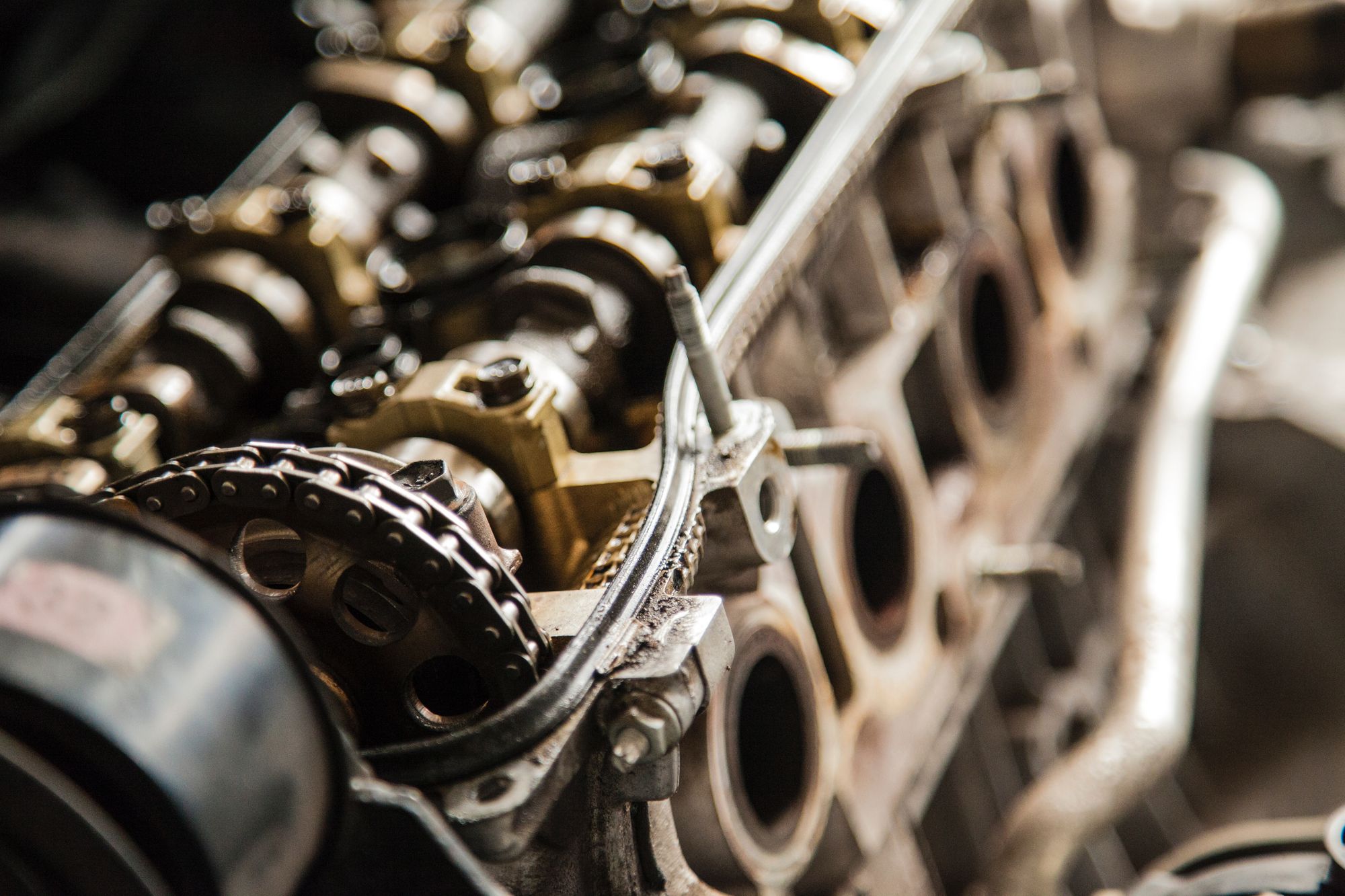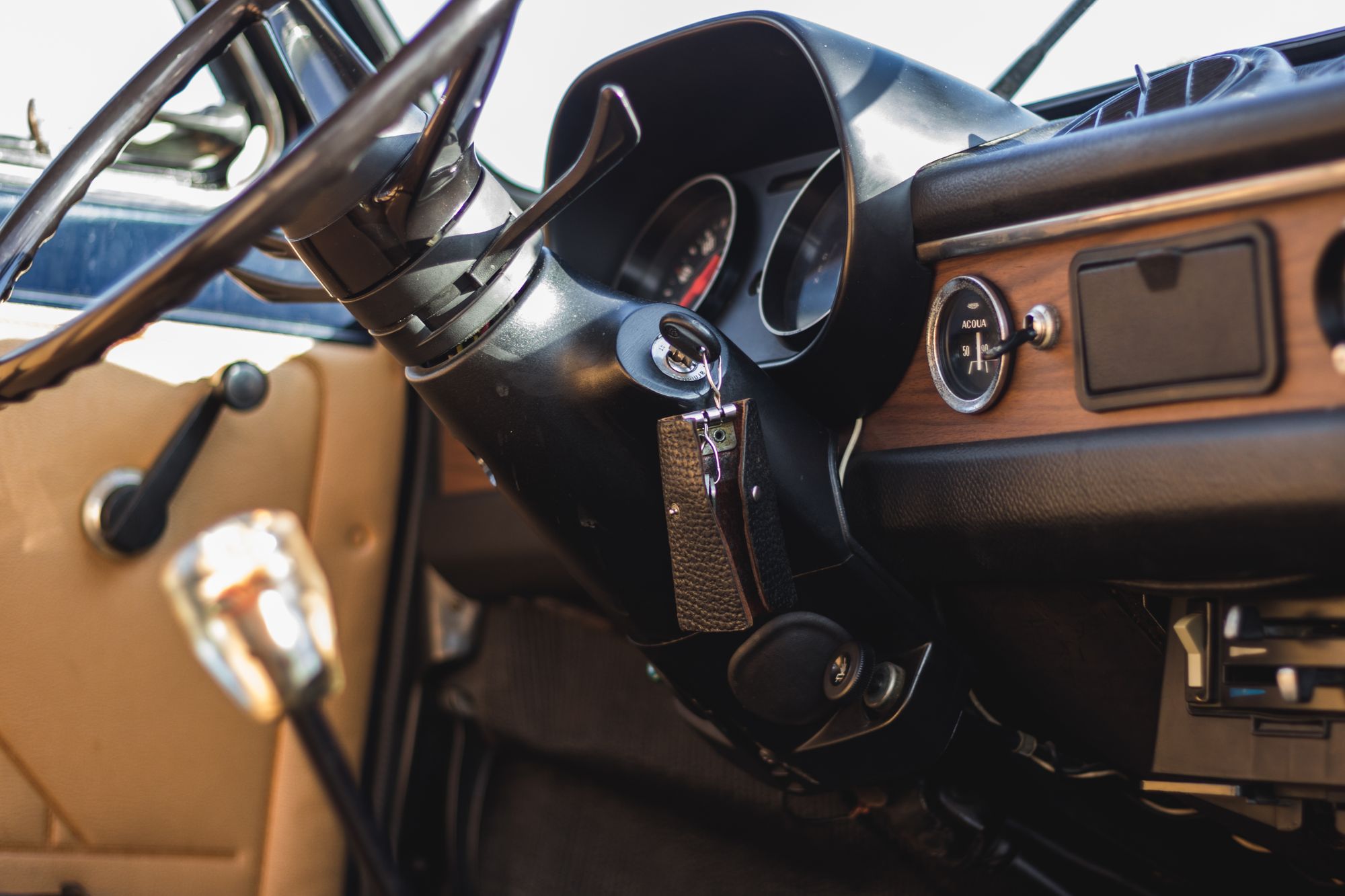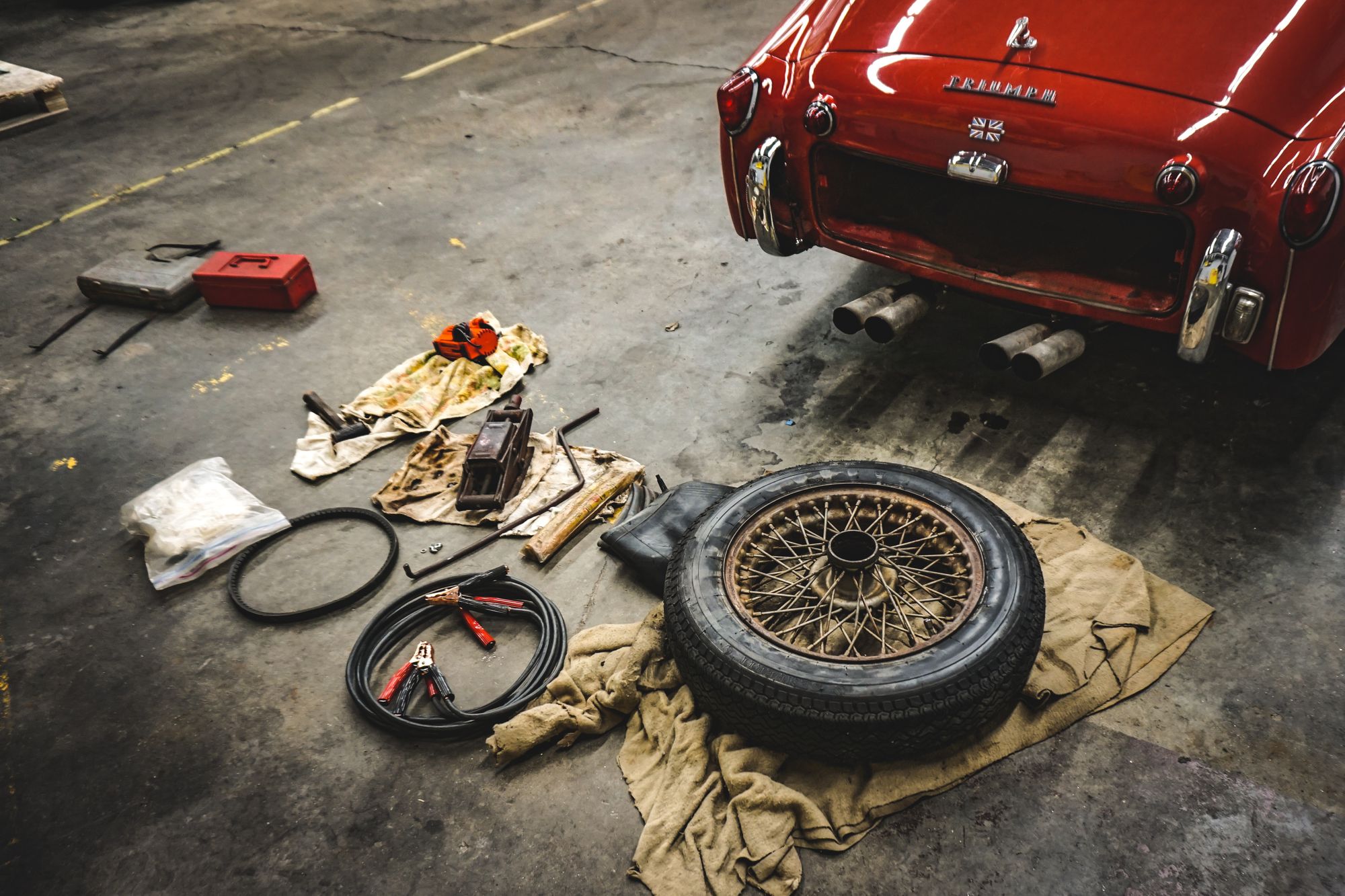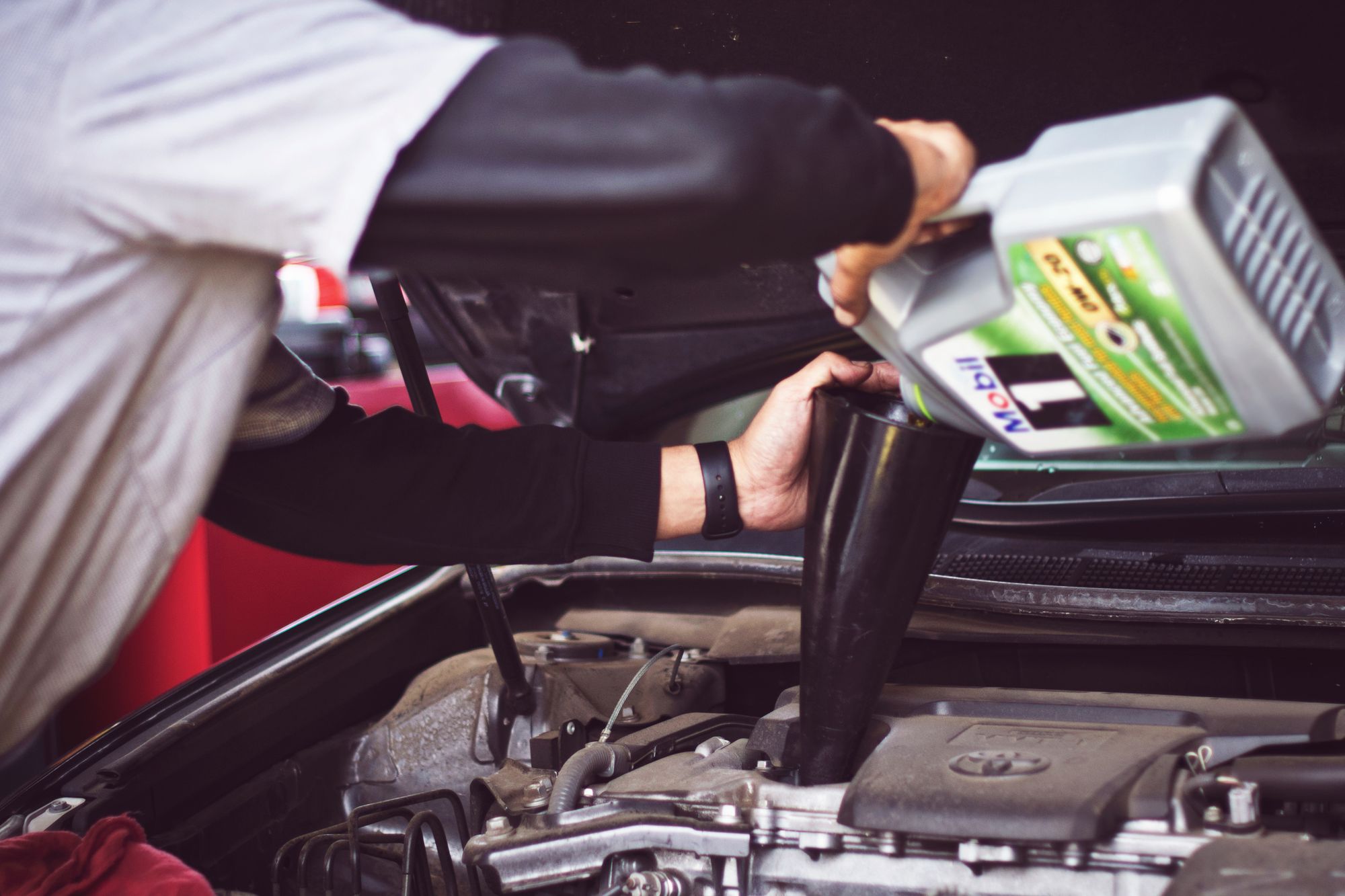Demystifying the internal-combustion engine
Driving a car can be quite easy for most of us, especially after getting used to it. Maintaining it to preserve its good condition, however, is a completely different story. In this article we demystify the machine that is the internal-combustion engine.

Introduction
Driving a car can be quite easy for most of us, especially after getting used to it. Maintaining it to preserve its good condition, however, is a completely different story. Certainly, the most important part in the car is the engine. Think of the car as a human body: as we need oxygen and food to stay alive and “function” normally, so does the combustion engine need fuel and oxygen. But how does it convert its “food” into energy, fuel into motion?
From fluid to energy

The operating principle of an internal-combustion engine is mentioned in its name. All we need from the fuel to make the car move is combustion: mini-explosions produced when the fuel mixes with oxygen under a specific pressure inside the cylinders - small metal tubes in the engine. These small, controlled and periodical explosions result into expanded gases and heat that causes the downward movement of the pistons which will spin the engine’s crankshaft (similar to the shin in a human body) that will eventually set the car’s drive wheels in motion.
Almost all of today’s internal-combustion engines use the four-stroke combustion cycle (also known as the Otto cycle) to convert gasoline into motion, but the Diesel cycle is also employed by many car manufacturers today. The four strokes are:
- Intake stroke
- Compression stroke
- Combustion stroke
- Exhaust stroke
The main difference between the diesel and gasoline engines lies in the compression and combustion strokes. We’re going to see now what really happens in each stroke and explain this small difference:

2. Intake
In this phase the exhaust valve is closed, and the piston is initially at its highest point. Then, the intake valve opens, and the piston moves down to let the engine “inhale” the air and take “a small sip” of gasoline. Only a small drop of gasoline is enough for the combustion.
2. Compression
- Gasoline: At this stage, both valves are closed. The piston rises and compresses the air/fuel mixture. This simple compression will raise the temperature inside the cylinder by about 300°C. If the temperature happened to rise by another 100°C, the mixture could ignite spontaneously.
- Diesel: The same process happens for this engine, the only difference being that there is only air inside of the cylinder at this stage.
3. Combustion
- Gasoline: The piston has reached its highest point; the spark plug emits a spark to ignite the gases. This results in the rise of the temperature and pressure which will push back down the piston to its lowest point. Both valves are closed for this whole phase.
- Diesel: This type of engine doesn’t have a spark plug so the small explosion will be caused by the injection of the small drop of Diesel in the compressed hot air, forcing the piston back down.
4. Exhaust
The exhaust valve is now open, and the piston goes back to its initial point preparing for the next cycle, making the exhaust gases leave the cylinder to go out the tailpipe.
This cycle happens in each cylinder of the engine. The most common number of cylinders in a car is four, six or eight, which can be arranged in three different ways: inline, V or flat.
Diesel vs. Gasoline

Let’s start by understanding the difference between what happens in each phase of the Otto Cycle in the two engine types, to be able to compare the strengths and weaknesses of the two of them.
1. Intake
In the gasoline engine, the aspired and dosed air/fuel mix has a variable volume. For the diesel one, the quantity of “inhaled” air is constant.
2. Compression
The pressure at the end of this phase inside of the gasoline engine reaches 10 to 15 bars and the temperature inside of the cylinders varies from 300 to 400°C; inside the diesel engine, the pressure inside the combustion chamber is considerably higher and goes from 30 to 40 bars (which also explains the temperature inside of the cylinders reaching 700°C). That’s why the diesel engine needs more solid and wider organs to withstand the high pressure, alongside a more elaborate lubrication system to resist the heat: now you can understand why diesel engines are more expensive than gasoline ones.
3. Combustion
As we’ve seen in the previous section, diesel engines use direct fuel injection for combustion which makes the combustion slower than in a gasoline engine.
4. Exhaust
The chemical reactions for combustion result into different gas emissions for the two types of engines since the two petroleum fuels have different chemical compositions. It takes less refining to create diesel fuel, which is why it is cheaper than gasoline. In the next paragraph we will get into the details of those two chemical reactions.
Different Properties
After studying well the difference in the operating principles between the gasoline and diesel engines, we can now break down the main differences in their properties:
- Gas engines are more suitable for people who love speed because for this type of engine you have to accelerate more to get more power. On the other hand, diesel offers more torque at lower speeds: this means that you have power without the need to reach a high speed - that’s why the engines for vans or trucks are almost exclusively diesel engines, because the higher torque allows them to carry much heavier loads.
- The cooling process must be more elaborate for the diesel engines in order to let the engine last longer, because the parts of the engine need to be subject to much higher pressures and temperatures in order to combust spontaneously.
- The risk of fire is lower in diesel engines as the flash point of diesel is higher than that of gasoline.
From energy to motion

Crankshaft
The linear motion of the pistons is converted into a rotational one thanks to the crankshaft. In fact, the number of crank throws in this organ is equal to the number of pistons in the engine: a crank throw is what allows the piston to translate (or "throw") linear motion to rotation of the crankshaft, and they act as lever arms powered by the pistons. The crankshaft is also designed in such a way as to reduce the engine’s vibrations.
Flywheel
The flywheel is a rotating metal disc located between the engine and the clutch used to ensure the transmission between the two. Its main purpose is also to regulate and stabilize the rotation of the engine to reduce the jolts caused by the cylinders. That’s why you may find it relatively heavy (5 to 10kg). The presence of teeth around the flywheel connects the engine to the starter and therefore enables it to start.
Clutch
The main function of the clutch is to transfer the torque from the flywheel to the gearbox by smoothly delivering the power of the engine. In fact, when the clutch pedal is pressed, the clutch disc disconnects from the rotating flywheel enabling the driver to change the gear without stopping the wheels from turning. When the pedal is released, the disc will engage contact with the flywheel and transmit the torque from the engine to the rest of the drivetrain.
Gearbox
The gear is the second stage in the transmission system after the clutch. It is usually fastened to the rear of the engine with the clutch between them. It is intended to transmit the power generated by the engine to the drive wheels by more or less multiplying the speed of rotation of the output shaft according to the speed using gears of different diameters, because an internal-combustion engine is limited to a precise speed range.
If the wheels were directly connected to the engine (so no gearbox), they would only be able to rotate at the same frequency of the engine. By using gears with an internal-combustion engine it's possible to increase the range of rotation of the wheels, thus enabling the wheels to be adapted to different conditions.
Wheels
The torque coming from the gearbox will finally be converted into movement, thanks to the rotation of the wheels.
Problems you may encounter with your engine

Some of you might have endured the painful experience of trying to start your car several times before having to give up and call the recovery service. After reading the previous paragraph and learning more about how an engine works you can now understand the basic things that can cause its malfunctioning, and hopefully prevent this from occurring.
The following pointers should help to you diagnose these problems faster:
The engine doesn’t start at all
The first part of the car to check if the engine does not even start to operate is the battery because it’s the most accessible and easiest to change of the various parts; if your car starts and suddenly stops whilst driving or from time to time doesn’t start, it can be that one of the wires is not well attached.
There could also be a problem caused by the engine control unit - in which case you will have to run car diagnostics and see with a specialist if the control unit can be fixed or if it will need to be replaced.
The engine doesn't "catch"

Three other common problems that can occur in the engine are: a bad fuel mix, lack of spark or lack of compression.
Bad fuel mix
A bad fuel mix can occur if:
- Obviously if you are out of fuel, the combustion can’t happen without it.
- If the fuel system adds too much or too little fuel to the mix, then maybe you will have to check the lambda sensor and change it if necessary. You can know by yourself if the fuel/air mix is normal just by looking at the exhaust. If it’s dark, then the mix contains too much fuel.
- You might have water in the mix and that prevents the fuel from burning. Usually if you notice white smoke going out from the exhaust pipe it means that your car is leaking coolant. This could be because the cylinder-head is no longer waterproof.
- The air intake is clogged, then the mix lacks air. You can check by yourself if the air filter is dirty just by looking at it, if its colour is brown or black and you can see dirt and dust it might be the time to change it.
Lack of spark
A lack of spark can be caused by several things:
- If the spark plug is worn, the spark might become weak or non-existent.
- The wire leading to spark plug is cut.
- The ignition time is too early is too late in the cycle.
Lack of compression
A lack of compression might occur for these reasons:
- There is a hole in the cylinder.
- The piston rings are worn allowing air or fuel to leak.
- The intake or exhaust valves aren’t sealing correctly.
Many other problems may occur in your engine for example over-consumption of oil which can be seen as blue smoke in the exhaust, or bearing wear that prevents the crankshaft from turning.
Day-to-day Maintenance

Employing even a basic car maintenance ritual is really useful since it can save you from unnecessary expenses, improve your safety, enhance the performance of your engine and contribute to a cleaner environment, especially if it is easy to do. You can see below some tips to maintain your engine:
Check drive belts
The drive belt plays a major role in a car’s electrical charging system. It transfers power from the crankshaft to other parts and accessories of the car such as the car’s alternator, the air and water pumps, the battery and other accessories that rely on mechanical power.
Unfortunately, today’s belts are made of rubber or other polymers that wear after a specific mileage even if you take good care of your car. So what I recommend you is to visually inspect your drive belt from time to time and check if there are some hairline cracks or any other changes in it.
Generally, you should replace your serpentine belt once every 40,000 km and your timing belt every 60,000 km - but make sure you read your owner’s manual to see the recommended mileage for your own car and start thoroughly inspecting your drive belts.
Check the oil level

The oil is really important for a proper functioning of the engine. Without it, all the mechanical parts moving inside of your engine will create friction as they brush against each other, this friction will generate heat that can reduce significantly the performance of your car, as well as loud noises and an increase in fuel consumption.
To check the oil level, you should wait at least 10 minutes after you stop your car. Then you have to remove the oil dipstick, wipe it with a clean rag and put it back in and pull it out again to see clearly the level of the oil. You should find indicators in your dipstick that could help you understand the level.
For most cars there should be H (high) and L (low) indicators, and the level should rest somewhere between these points. Also make sure the colour of the oil isn’t too dark - this is a sign of old or dirty oil containing impurities, which will prevent it from functioning as it should. Usually, you can find in your owner’s manual how often you should change your engine oil, and the viscosity needed, however it also depends on the quality of oil you use.
Replace the spark plugs
If your car doesn’t start from time to time, or if you notice an increase in fuel consumption and lack of acceleration, it might be time to change the spark plugs. If you’re keeping track of your mileage, it may be useful to know that they usually have to be replaced after 50,000 km but it also depends on the quality of spark plugs you are using.
It is usually easy to change spark plugs by yourself but if you don’t feel confident about your skills or lack the tools you can always ask for a professional’s help - though it will cost you.
Replace the engine's air filter
Think of the air intake as human lungs. Our body needs oxygen to live as the car needs air to function. If the air filter is dirty, the car will suffocate. So you must always visually inspect and change it whenever you notice dirt and debris on it, or if it becomes brown or black coloured. The air filter is usually easily accessible from the bonnet.
Check your engine's coolant level
Internal-combustion engines need a system that helps getting rid of the generated heats. This system is called radiator. The radiator needs a coolant to dissipate the heat into the environment, so if coolant is low or missing your engine will get overheated.
You should check it frequently, especially since it is very easy to check and top up, since most the cars today come with translucent coolant reservoirs with appropriate level markings on the panel, and coolant is readily available at gas stations.
Conclusion

All those factors we were talking about won’t have to work perfectly to make the engine work and you will probably notice when things aren’t working well after reading this article.
Maintenance for internal-combustion engines is expensive, and we can’t forget that there are many other disadvantages not mentioned in this article - for example the high cost of fuel or the emission of toxic gases.
In the next article in this series, we will be going over how electric engines work, before getting into the nitty-gritty details of comparing these two very different beasts.
